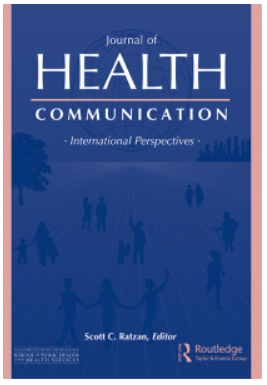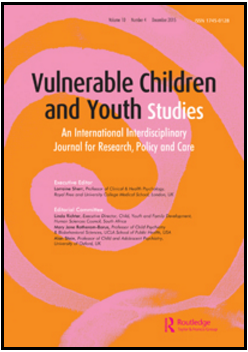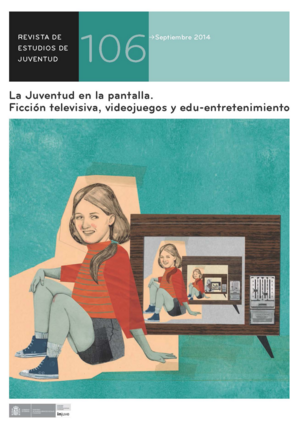Community radio for peacebuilding in the Colombian post-conflict: transformations, tensions and challenges for content production and local participation
Vega Casanova, J., Pérez Quintero, C. & Tapias Hernández, C. (2021) Community radio for peacebuilding in the Colombian post-conflict: transformations, tensions and challenges for content production and local participation, Social Identities, doi: 10.1080/13504630.2021.1924660
The text presents the results of the external evaluation of the project: ‘Community Radio for Peace and Coexistence’ (CRPC), implemented between 2015 and 2017 by the community media network RESANDER, with the support of the Colombian Government and the European Union. Considering that community radios are key actors for the construction of public dialogue and collective action about peace and coexistence in the Colombian territories, the purpose of the CRPC project was to strengthen community radios through a process that involved: training in radio production skills and communication for peace, production of new radio content and circulation of the content produced throughout the project. The evaluation aimed to generate evidence about the role of these community radios, especially after the signature of the peace agreements between the Colombian State and the FARC guerilla. The results show the contributions of the Colombian community radios for the construction of a culture of peace and coexistence from the local territories, as well as the transformations, tensions and challenges they faced on the production of new radio content and the construction of spaces for dialogue, participation and collective action.
See full text in the following link.
Revisión integradora sobre la evaluación de las campañas de comunicación en salud para la prevención del VIH en medios de comunicación masiva en América Latina
Vega-Casanova J, Camelo-Guarín A, del Río-González AM, Palacio-Sañudo J. (2020) Revisión integradora sobre la evaluación de las campañas de comunicación en salud para la prevención del VIH en medios de comunicación masiva en América Latina. Interface (Botucatu), 24: e200154 doi: 10.1590/interface.200154
Se realizó una revisión integradora de la literatura de los últimos treinta años sobre las evaluaciones de las estrategias de prevención del VIH implementadas en los medios de comunicación masiva en América Latina. Se identificaron 246 documentos, de los cuales 12 cumplieron los criterios de selección, y se identificaron 15 evaluaciones de campañas. Los resultados indican que el mensaje más utilizado era promover el uso del condón. La mayoría de las evaluaciones se centraban en recordar el mensaje de las campañas. Solo tres arrojan resultados de evaluaciones de conocimientos y otras dos sobre la actitud frente al uso del condón. Acerca de nueve cambios de comportamiento. En conclusión, existen pocos artículos con resultados de evaluación de este tipo de campañas. Se utilizan diseños de evaluación pre-experimentales con una única medida pos-test y sin grupo control.
Ver texto completo en el siguiente enlace.
Integrative review of the evaluation of health communication campaigns for HIV prevention in Latin American mass media
Vega-Casanova J, Camelo-Guarín A, del Río-González AM, Palacio-Sañudo J. (2020) Integrative review of the evaluation of health communication campaigns for HIV prevention in Latin American mass media. Interface (Botucatu), 2020; 24: e200154 doi: 10.1590/interface.200154
An integrative review of the literature of the last thirty years on evaluations of HIV prevention strategies implemented in the mass media in Latin America was conducted. A total of 246 documents were identified, of which 12 met the selection criteria and 15 campaign evaluations were identified. The results indicate that the most commonly used message was to promote the use of condoms. Most evaluations focused on remembering the message of campaigns and media exposure. Only three yield results on knowledge assessments and two on attitudes to condom use; nine reported behavioral changes. In conclusion, there are few articles with evaluation results. The assessment of behaviors is increasingly taken into account. Pre-experimental evaluation designs are used.
See full text in the following link.
Edu-entretenimiento y movilización social en la prevención de las Violencias Basadas en Género en adolescentes: hallazgos sobre el rol del diálogo, el debate y la reflexión en un piloto de "Revelados" en un municipio del Caribe colombiano
Pérez-Llerena, Y. y Vega-Casanova, J. (2020). Edu-entretenimiento y movilización social en la prevención de las Violencias Basadas en Género en adolescentes: hallazgos sobre el rol del diálogo, el debate y la reflexión en un piloto de "Revelados" en un municipio del Caribe colombiano. Investigación & Desarrollo, 28(1), 6-35. http://rcientificas.uninorte.edu.co/index.php/investigacion/article/viewArticle/12305
Este artículo aborda el proceso de generación de diálogo, debate y reflexión sobre Violencias Basadas en Género (VBG) en adolescentes del municipio de San Juan Nepomuceno (Bolívar), en el marco de la realización de un piloto de la estrategia de Edu-entretenimiento y Movilización Social “Revelados desde todas las posiciones”, implementada en varios municipios de Colombia. A través de grupos focales, entrevistas y la técnica de Most Significant Change se identificaron, entre otros hallazgos, las distintas formas como se expresa la VBG en la población adolescente y joven, así como la importancia de la articulación de los talleres para profundizar conocimientos, con el teatro como catalizador de emociones, así como con la producción de televisión como escenario de participación para trabajar en torno a la VBG. Estos hallazgos enriquecen la evidencia previa en torno a cómo la Comunicación para el Cambio Social y de Comportamiento y particular el eduentretenimiento y la movilización social pueden aportar desde el diálogo, el debate y la reflexión a la prevención y disminución de las VBG en la población adolescente y joven.
Ver texto completo en el siguiente enlace.
Media Cultures in Latin America: Key Concepts and New Debates, A. C. Pertierra and J. F. Salazar (eds) (2020)
Vega Casanova, J. (2020) Review of: Media Cultures in Latin America: Key Concepts and New Debates, A. C. Pertierra and J. F. Salazar (eds) (2020) New York: Routledge, 208 pp. Journal of Alternative & Community Media, 5(2), 232-233. doi: 10.1386/joacm_00087_5
Ver texto completo en el siguiente enlace.
Identification With Characters, Elaboration, and Counterarguing in Entertainment-Education Interventions Through Audiovisual Fiction
Igartua, J. J., & Vega, J. (2016). Identification With Characters, Elaboration, and Counterarguing in Entertainment-Education Interventions Through Audiovisual Fiction. Journal of health communication, 21:3, 293-300, DOI: 10.1080/10810730.2015.1064494
The aim of this article is to further knowledge of the explanatory processes of narrative persuasion in the field of health communication, using data obtained in a research study of entertainment-education based on audiovisual fiction. Participating in the study were 208 young persons between the ages of 14 and 20, randomly distributed to three different groups. Each of the groups was exposed to a different episode of the Colombian television series Revelados, desde todas las posiciones. The results showed that greater identification with the main character of the episode transmitting a prevention message was associated with greater cognitive elaboration, which in turn led to more favorable attitudes toward the topics addressed. However, counterarguing was not observed to play a significant mediating role. The findings of this study allow us to conclude that getting people to think and reflect can help persuade them, which suggests that narrative persuasion models and dual models of rhetorical persuasion can be compatible in certain contexts, such as when messages are designed in such a way that characters make explicit arguments that endorse a prosocial message through dialogues.
See full text in the following link.
Social practices on the right to protection in childhood for boys, girls, teenagers, parental figures and teachers
Vega, J., Madariaga, C. A., Acuña, E. P., & Posso, L. M. (2015). Social practices on the right to protection in childhood for boys, girls, teenagers, parental figures and teachers. Vulnerable Children and Youth Studies, 10(1), 79–92. doi:10.1080/17450128.2014.996630
This paper presents the results of formative research on the design, implementation, and assessment of a strategy to transform the social practices regarding the right to childhood protection in the Colombian Caribbean region. To characterize the social practices regarding the right to childhood protection as well as the cognitions and social norms that support them, on the part of the boys, girls, teenagers, parental figures and teachers in the Atlantic region.The study used focus groups with boys, girls, teenagers, parental figures, and teachers to identify both the social practices linked to this right and the cognitions and social norms that support these practices. The information was processed by performing a content analysis with Atlas.ti software (version 7, Scientific Software Development GmbH, Berlin, Germany).The results obtained for all populations indicate that there are social conventions that underpin the social practices that jeopardize the right to childhood protection. For this reason, educational and communication strategies should question the cognitions and social norms linked to childhood, upbringing, care, and protection when modeling new practices based on other meanings and the inclusion of other agents.
See full text in the following link.
Ficción televisiva, edu-entretenimiento y comunicación para la salud. Revista de Estudios de Juventud
Igartua, J. J., y Vega, J. (2014). Ficción televisiva, edu-entretenimiento y comunicación para la salud. Revista de Estudios de Juventud, (106), 15-29.
Se presentan los resultados de una investigación realizada en Colombia en el marco de un proyecto sobre edu-entretenimiento que utilizó como herramienta de intervención la serie televisiva Revelados, desde todas las posiciones, dirigida a jóvenes entre los 15 y 19 años. La serie incluía contenidos educativos sobre vida sexual y reproductiva, diversidad sexual y violencia de género. Con objeto de obtener una primera información sobre el impacto se desarrolló el estudio que aquí se presenta, tomándose como referencia los modelos actuales de persuasión narrativa aplicados al campo de la salud. En el estudio participaron 208 jóvenes (de entre 14 y 20 años; 51.9% mujeres) que fueron distribuidos aleatoriamente en tres grupos, de modo que en cada grupo se visionó un episodio diferente de la serie (cada uno de ellos centrado en una temática particular). Los capítulos se consideraron divertidos y realistas, estimulaban más emociones positivas que negativas, y potenciaban la reflexión pero no la contra-argumentación. Además, se observó que una mayor identificación con el protagonista del capítulo que vehiculaba el mensaje educativo se asociaba a una mayor elaboración cognitiva, lo que conducía a su vez a actitudes más favorables hacia los temas abordados.
Ver texto completo en el siguiente enlace.

 español
español inglés
inglés francés
francés alemán
alemán





